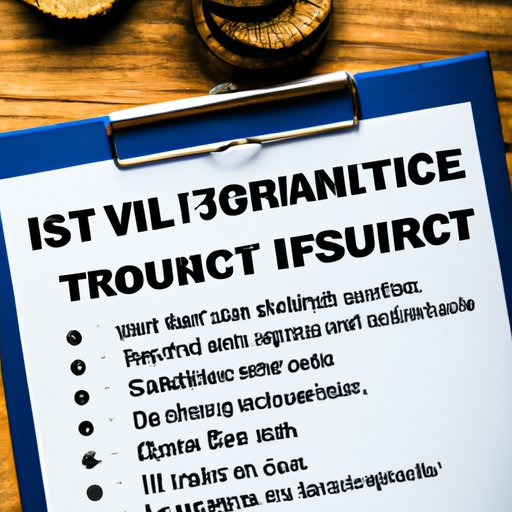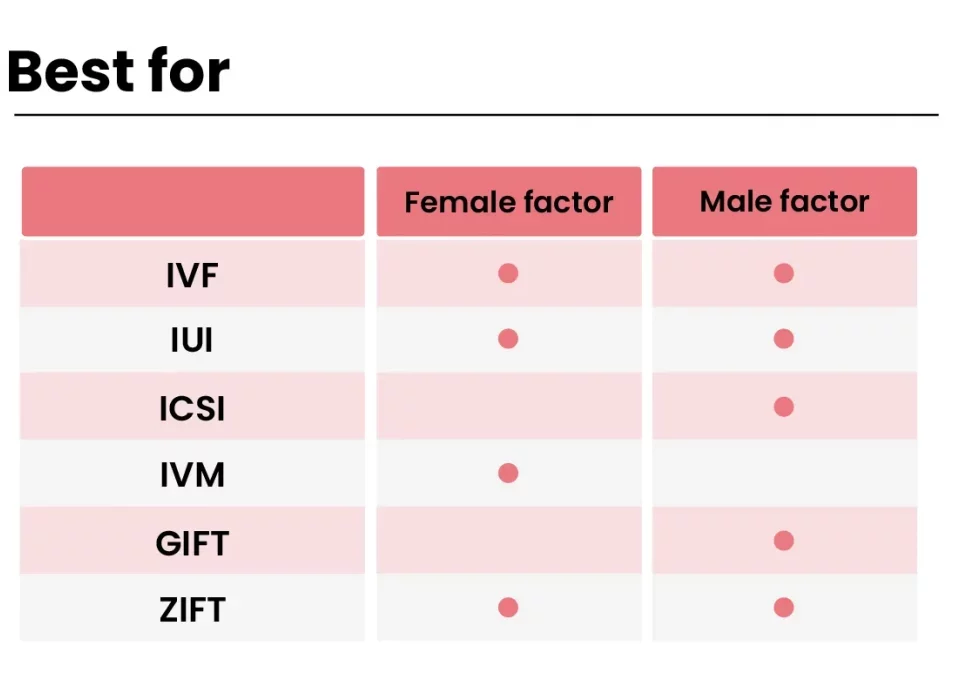
How Does IVF Work? A Deep Dive into the Journey of In Vitro Fertilization
April 1, 2025
Is IVF Painful? Everything You Need to Know About the Process
April 2, 2025How Much Does IVF Really Cost? Your Complete Guide to Understanding the Price Tag

How Much Does IVF Really Cost? Your Complete Guide to Understanding the Price Tag
In vitro fertilization (IVF) is a life-changing option for many people dreaming of starting a family. But let’s be real—when you first hear about IVF, one of the biggest questions swirling in your mind is probably: How much is this going to cost me? It’s a fair question. IVF isn’t cheap, and the numbers you see online or hear from friends can feel overwhelming or even confusing. The good news? I’m here to break it all down for you—step by step, dollar by dollar—so you can get a clear picture of what to expect and how to plan for it.
IVF costs vary widely depending on where you live, your specific needs, and even the clinic you choose. In this guide, we’ll dive into the nitty-gritty of IVF pricing, explore hidden expenses that don’t always make the headlines, and share practical tips to help you manage the financial side of this journey. Plus, I’ll sprinkle in some fresh insights—like how new tech is shaking up costs and what real families wish they’d known before starting. Ready? Let’s get started.
What’s the Average Cost of IVF in the U.S.?
If you’re in the United States, the price of a single IVF cycle typically ranges between $12,000 and $25,000. That’s a big window, right? The average lands around $21,600, according to data from fertility experts and clinics across the country. But here’s the catch: that’s just the base price for one round, and most people don’t get pregnant on their first try. In fact, the average patient goes through two to three cycles, which can push the total cost closer to $50,000—or more if you add extras like genetic testing or donor eggs.
So, what’s included in that $12,000 to $25,000? Usually, it covers the core steps of IVF:
- Monitoring appointments (ultrasounds and blood tests to track your progress)
- Egg retrieval (a quick procedure to collect eggs from your ovaries)
- Lab fees (where the magic happens—sperm meets egg in a petri dish)
- Embryo transfer (placing the embryo into the uterus)
But that’s not the whole story. Medications, which can cost $3,000 to $7,000 extra per cycle, are often billed separately. And if you need additional procedures—like freezing embryos or testing them for genetic issues—the bill climbs higher. A 2023 report from the American Society for Reproductive Medicine (ASRM) found that about 60% of IVF patients end up spending beyond the base price due to these add-ons.
Real Talk: One mom I spoke to, Sarah from Texas, said her first cycle rang up at $18,000. “We thought that was it,” she shared. “But then we needed a second round, plus meds, and suddenly we were looking at $40,000. It’s a shock if you’re not ready for it.”
Why Does IVF Cost So Much?
IVF isn’t just a doctor’s visit—it’s a high-tech process that involves a team of specialists, fancy equipment, and a whole lot of precision. Here’s a peek at why the price tag is what it is:
- Specialized Expertise: You’ve got fertility doctors, embryologists, and nurses working together. Their skills don’t come cheap.
- Lab Technology: Think incubators, microscopes, and sterile environments to keep embryos safe. That gear costs a fortune to buy and maintain.
- Medications: Hormones to stimulate your ovaries aren’t your average over-the-counter pills. They’re custom-made and pricey.
- Time and Effort: One cycle takes weeks of monitoring and adjustments. It’s not a one-and-done deal.
A cool fact? The first IVF baby, Louise Brown, was born in 1978, and back then, it was an experimental procedure. Today, over 10 million babies have been born through IVF worldwide, and the tech has only gotten more advanced—and more expensive. A 2024 study from Stanford University pointed out that rising lab costs and demand for cutting-edge tools (like AI-powered embryo selection) are nudging prices up year by year.
Quick Tip: Ask your clinic for a detailed breakdown of their fees. Some bundle everything into one price, while others nickel-and-dime you for each step. Knowing upfront can save you from sticker shock later.

Breaking Down the IVF Price Tag: What You’re Actually Paying For
To really get a handle on IVF costs, let’s split it into pieces. Here’s what you’re likely to see on your bill, based on the latest trends and real patient experiences:
1. Initial Consultation and Testing ($250–$500)
Before you even start, you’ll meet with a specialist. They’ll run tests—blood work, ultrasounds, maybe a semen analysis—to figure out what’s going on. This usually costs a few hundred bucks, though some clinics roll it into the full package.
2. Medications ($3,000–$7,000 per cycle)
These are the shots and pills that help your body produce multiple eggs. The price depends on your age, health, and how your body responds. Older patients or those with lower ovarian reserve might need higher doses, which bumps up the cost.
- ✔️ Save here: Check if your clinic partners with pharmacies offering discounts. Some programs can cut med costs by 20–30%.
3. The IVF Cycle Itself ($12,000–$15,000)
This is the meat of it: egg retrieval, fertilization in the lab, and embryo transfer. Prices vary by region—big cities like New York or LA tend to be pricier than smaller towns.
4. Add-Ons That Add Up
Here’s where things get tricky. Many clinics offer extras that sound tempting but jack up the total:
- Embryo Freezing: $1,000–$2,000 upfront, plus $300–$600/year for storage.
- Genetic Testing (PGT): $3,000–$5,000 to screen embryos for issues like Down syndrome.
- Intracytoplasmic Sperm Injection (ICSI): $1,500–$2,000 if sperm needs a little help fertilizing the egg.
Interactive Quiz:What’s Your IVF Priority?
Take a sec to think:
- A) I want the highest success rate, no matter the cost.
- B) I need to keep this as affordable as possible.
- C) I’m somewhere in between—success matters, but so does my budget.
Jot down your answer and see how it shapes your choices later!
How Location Affects IVF Costs
Where you live plays a huge role in what you’ll pay. IVF in the U.S. is pricier than in many other countries, but even within the states, there’s a big spread. Here’s a quick look:
| Region | Average Cost per Cycle | Why the Difference? |
|---|---|---|
| Northeast (e.g., NY) | $20,000–$25,000 | High demand, top-tier clinics, urban costs |
| Midwest (e.g., OH) | $15,000–$18,000 | Lower overhead, fewer luxury add-ons |
| South (e.g., TX) | $14,000–$17,000 | Competitive pricing, more clinics |
| West Coast (e.g., CA) | $18,000–$22,000 | Tech-savvy clinics, higher living costs |
Globally, it’s a different game. In Canada, a cycle might cost $10,000–$15,000, while in India or Mexico, you could pay as little as $3,000–$6,000. Medical tourism is a growing trend—about 5% of U.S. patients travel abroad for cheaper IVF, per a 2024 fertility travel report. But there’s a trade-off: you’ll need to factor in flights, hotels, and the risk of less oversight.
Unique Insight: Some U.S. clinics are now offering “tele-IVF” options, where initial consults and monitoring happen online or at local labs, cutting travel costs if you’re far from a major center. It’s a small but growing shift worth asking about.
Insurance and IVF: Will It Cover You?
Here’s the million-dollar question: Does insurance pay for IVF? The answer is… it depends. In the U.S., only 20 states have laws requiring some level of fertility coverage as of 2025, and even then, IVF isn’t always included. If you’re lucky enough to live in a state like Massachusetts or Illinois, you might get full or partial coverage. Elsewhere, you’re often on your own.
- Good News: About 25% of large employers now offer IVF benefits, up from 15% five years ago, according to a 2024 Mercer survey. Companies like Google and Starbucks even cover multiple cycles.
- Bad News: If your plan doesn’t cover IVF, you’re looking at out-of-pocket costs. And even with coverage, copays and deductibles can still hit thousands.
Action Step: Call your insurance provider and ask these three questions:
- Does my plan cover IVF?
- Are there limits on cycles or dollar amounts?
- What about meds and extras like freezing?
Write down the answers—you’ll thank yourself later.
Hidden IVF Costs You Might Not Expect
Most articles talk about the big-ticket items, but there are sneaky expenses that can catch you off guard. Here are three that don’t get enough attention:
1. Time Off Work
IVF involves multiple appointments—sometimes 10 or more per cycle. If you don’t have paid leave, lost wages can add up. A 2023 study from the University of California found that 40% of IVF patients missed at least five workdays per cycle, costing an average of $1,200 in lost income.
2. Emotional Support
The stress of IVF is real. Therapy or counseling (around $100–$200 per session) isn’t always covered by insurance, but it can be a lifeline. One couple I heard from spent $1,500 on support groups over two cycles—and said it was worth every penny.
3. Travel and Lodging
If your closest clinic is hours away, gas, parking, or even hotel stays pile on. For rural patients, this can tack on $500–$1,000 per cycle, per a 2024 rural healthcare report.
Pro Tip: Look into fertility grants or nonprofits like BabyQuest. They won’t cover everything, but $5,000–$10,000 in aid can lighten the load.
Can You Make IVF Cheaper? Practical Ways to Save
IVF might feel like a budget-buster, but there are ways to stretch your dollars. Here’s how real families—and experts—keep costs in check:
Shop Around
Clinics aren’t all priced the same. A 2024 FertilityIQ survey found that comparing three clinics in the same area could save you up to $3,000 per cycle. Look at success rates too—cheaper doesn’t always mean better.
Mini-IVF or Natural IVF
These lower-dose options use fewer meds, dropping costs to $5,000–$10,000 per cycle. Success rates are lower (around 10–15% vs. 40% for standard IVF), but it’s a solid choice if you’re sensitive to hormones or on a tight budget.
Financing Plans
Many clinics offer payment plans or partner with lenders like Prosper Healthcare. Rates vary (5–15% interest), but spreading $20,000 over three years feels less daunting than a lump sum.
Tax Breaks
The IRS lets you deduct medical expenses over 7.5% of your adjusted gross income. If you make $60,000 and spend $25,000 on IVF, you could write off about $20,500. Talk to a tax pro to max this out.
Poll Time:How Are You Funding IVF?
- A) Savings
- B) Loan/Financing
- C) Insurance
- D) Grants or Family Help
Drop your pick in your mind—or share with a friend doing IVF!
New Tech and Trends: How They’re Changing IVF Costs
IVF isn’t stuck in the past—new tools are shaking things up, and they’re affecting your wallet. Here’s what’s hot in 2025:
AI Embryo Selection
Clinics are using artificial intelligence to pick the healthiest embryos, boosting success rates by 10–15%, per a 2024 ASRM study. It’s pricey (adds $500–$1,000), but fewer failed cycles could save you money long-term.
At-Home Monitoring
Some companies now sell kits to track hormones at home, cutting clinic visits. A cycle with at-home tech might drop from $15,000 to $12,000, though it’s still in early stages.
Lab-Grown Eggs
This one’s wild—scientists are working on creating eggs from stem cells. It’s not ready yet (think 5–10 years), but it could slash costs for donor egg IVF (currently $20,000–$40,000) by 50% or more, says a 2024 Nature journal forecast.
Fresh Take: These innovations aren’t just cool—they’re tackling a big IVF pain point: unpredictability. Higher success rates mean fewer cycles, which means less spent overall. Keep an eye on clinics testing this stuff—it’s the future.
Success Rates and Costs: Are You Getting What You Pay For?
Here’s a hard truth: IVF doesn’t always work. The CDC says women under 35 have a 40–50% chance of a live birth per cycle, but that drops to 20% by age 40 and 5% by 45. So, does spending more guarantee a baby? Not exactly.
- Cheap Clinics: Lower prices might mean older tech or less experienced staff. Success rates can dip below 30%.
- High-End Clinics: A $25,000 cycle at a top clinic might hit 50–60% success, thanks to better labs and add-ons like PGT.
Case Study: Meet Jen, a 38-year-old from Ohio. She went with a budget clinic ($12,000/cycle) and failed twice. Switching to a pricier spot ($20,000) with PGT worked on the first try. Total cost? $44,000 vs. $40,000 if she’d started at the better clinic. Lesson? Sometimes spending more upfront saves you heartache—and cash.
Checklist:Picking a Clinic? Ask These:
✔️ What’s your live birth rate for my age group?
✔️ Are add-ons included or extra?
✔️ Do you offer refunds if it fails?
(About 10% of clinics now have “success or refund” deals—worth a look!)
IVF Around the World: Is Traveling Worth It?
If U.S. prices make your head spin, going abroad might tempt you. Here’s how it stacks up:
| Country | Cost per Cycle | Success Rate | Travel Costs |
|---|---|---|---|
| Spain | $6,000–$8,000 | 40–50% | $1,000–$2,000 |
| Mexico | $4,000–$6,000 | 30–40% | $500–$1,000 |
| Thailand | $5,000–$7,000 | 35–45% | $2,000–$3,000 |
Pros: You save big—sometimes 50–70% off U.S. rates. Plus, some countries (like Spain) have top-notch clinics with English-speaking staff.
Cons: Travel adds stress, and regulations vary. A bad clinic could mean wasted money—or worse.
Untapped Angle: Some international clinics now offer “IVF vacation packages” with lodging and recovery perks. One couple saved $10,000 in Thailand and got a mini-vacation out of it. Research thoroughly if you go this route—check reviews and accreditation.
Real Stories: What IVF Costs Taught These Families
Numbers are one thing, but hearing from people who’ve been there hits different. Here are two quick tales:
- Mike and Lisa, California: “We budgeted $20,000, but meds and freezing pushed us to $28,000. We wish we’d asked about generic drugs—they’re half the price and just as good.”
- Aisha, Georgia: “Insurance didn’t cover us, so we took out a $15,000 loan. It worked on cycle two, but the debt’s still hanging over us. Start saving early if you can.”
Takeaway: Everyone’s journey is unique, but planning for the unexpected is universal. Over 70% of patients surveyed by Resolve in 2024 said they underestimated costs by at least $5,000.
Your IVF Budget: A Step-by-Step Plan
Ready to take control? Here’s a simple roadmap to figure out your IVF budget:
- Estimate Your Base Cost
Call two local clinics for quotes. Add $5,000 for meds as a safe bet. - Factor in Cycles
Plan for two cycles if you’re under 35, three if older. Multiply your base by that number. - Add Extras
Want freezing or PGT? Tack on $3,000–$7,000 total. - Check Resources
Look at insurance, grants, or loans. Subtract any help you find. - Build a Cushion
Add 10–15% for surprises like travel or therapy.
Example: 35-year-old in Texas, no insurance:
- Base: $16,000 x 2 cycles = $32,000
- Meds: $5,000 x 2 = $10,000
- Freezing: $1,500
- Cushion: $4,350 (15%)
Total: $47,850

Final Thoughts: Is IVF Worth the Cost?
IVF’s price tag can feel like a mountain, but for many, it’s the path to a family they wouldn’t have otherwise. The key is going in with your eyes open—knowing the costs, the odds, and your options. Whether you’re saving up, hunting for deals, or exploring new tech, you’ve got more power than you think to make this work.
What’s your next step? Maybe it’s a call to your clinic, a chat with your boss about benefits, or just sitting down with a calculator. Whatever it is, you’re not alone—millions have walked this road, and you can too. Got questions or a story to share? Drop a mental note to yourself—I’d love to hear how it goes.

